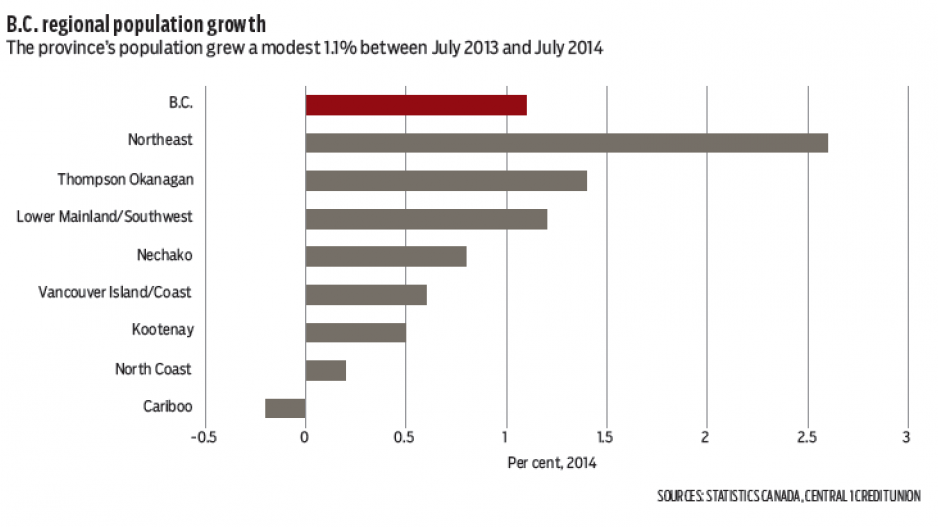Large Canadian urban centres typically attract the most international immigrants, and a rebound in the past year, perhaps due to the fading impact of the recession and a higher number of non-permanent residents, underpinned population growth in Metro Vancouver
Detailed 2014 population estimates released last week by Statistics Canada showed significant variation among regional areas.
As we already know from previous data releases, B.C.’s population grew 1.1% on a July-to-July basis in 2014. However, on a regional basis it was a mix of high- and low-growth performances.
Among larger metro areas, growth of 1.3% in Metro Vancouver more than offset a tepid growth rate of 0.3% in Abbotsford-Mission in the Lower Mainland-Southwest. Growth in Kelowna (1.8%) provided the strongest lift in the Thompson Okanagan, while Victoria’s expansion was muted at 0.3%.
In comparison to other census metropolitan areas across Canada, population growth in Kelowna was fifth-highest in the country, and Vancouver was ninth. Victoria and Abbotsford-Mission were among the lowest. Excluding large metro areas, B.C.’s population climbed by 0.9%.
While population estimates will be revised as more complete information is made available, wide regional variations can be traced to broad economic and migratory trends.
Large Canadian urban centres typically attract the most international immigrants, and a rebound in the past year, perhaps due to the fading impact of the recession and a higher number of non-permanent residents, underpinned population growth in Metro Vancouver.
Meanwhile, interprovincial inflows buoyed growth in Kelowna. That could reflect an increased flow of Albertans to B.C., which outpaced growth in Alberta-bound B.C. residents.
In northern B.C., improvement in economic activity has yet to translate into substantial increases in permanent residents, suggesting labour market demands are in part being met by a mobile workforce.
There were exceptions: the northeast gas patch reported significant growth, while Kitimat-Stikine also grew at a modest pace of 1.2%. •
Bryan Yu is senior economist at Central 1 Credit Union.




